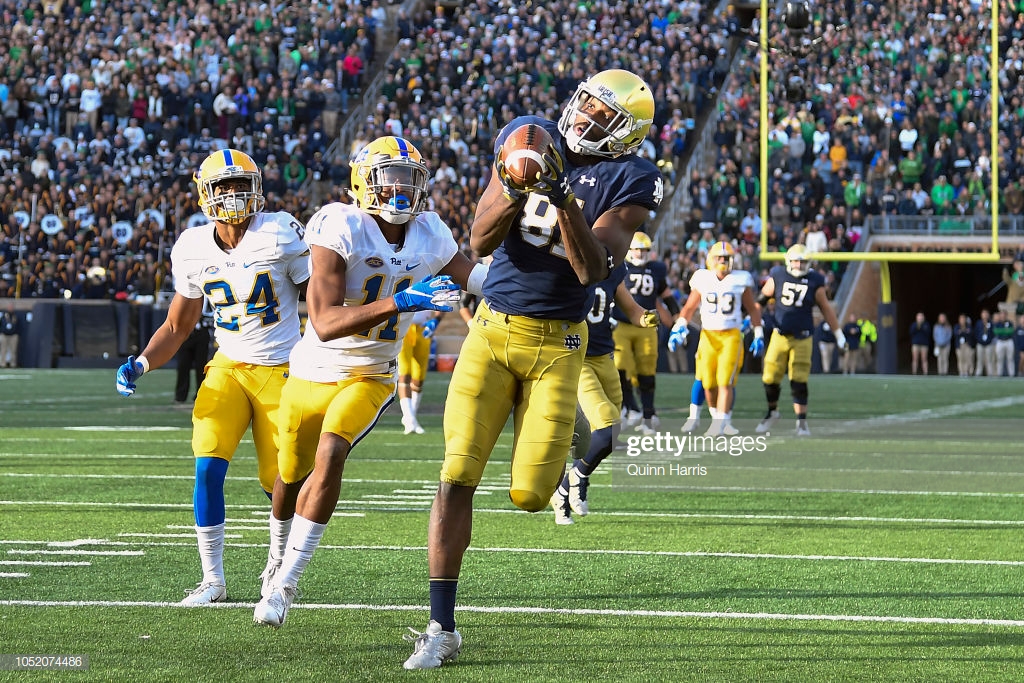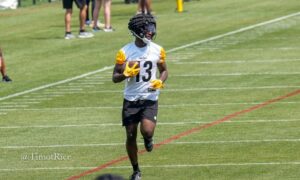Two years in a row, Notre Dame saw some of their big wide receivers drafted on Day Two by AFC North teams. First, it was the Baltimore Ravens taking Miles Boykin in the third round. Last month, the Pittsburgh Steelers drafted his college teammate, Chase Claypool, in round two. Let’s hope his rookie year is more successful than Boykin’s.
Despite playing in all 16 games and being credited as the starter in 11, amassing over 400 snaps, Boykin was only targeted 22 times, catching 13 passes for 198 yards. He did score three touchdowns. Over a quarter of his yardage came on one 50-yard play. He is credited with one drop by Pro Football Reference.
Despite the relatively pedestrian rookie year, Ravens general manager Eric DeCosta remains bullish on the second-year wide receiver, saying that he is “very, very excited about Miles” heading into the 2020 season, according to the team’s website, a remark that he made at the Combine in February.
“He made some big plays for us throughout the course of the year”, he said. “We expect him to improve quite a bit with an offseason. He’s a big and strong and fast and physical guy. Great attitude. The second year for most receivers is critical and we think he’ll make a big jump”.
Bokyin was one of two wide receivers Baltimore drafted last year, the other being Marquise Brown in the first round. The latter had a pretty successful rookie season, overall, especially considering the fact that he spent almost all of the offseason recovering from a foot injury.
The team added two more wide receivers during the 2020 NFL Draft, taking Devin Duvernay in the third round and adding James Proche in round six. They join Willie Snead, Chris Moore, and Jaleel Scott. It’s unlikely all seven wide receivers actually make the 53-man roster, though.
During the 2019 season, the team’s wide receivers accounted for only 115 receptions for 1479 yards, though they did amass 17 touchdown receptions, which is not insignificant. Brown, Boykin, and Snead accounted for 15 of them, the other two coming from Seth Roberts, who was on a one-year contract.
Baltimore recorded more rushing yards than passing yards last year. That was in part due to the fact that they frequently had comfortable leads, but they also talked openly about their offense being built around the run game. Lamar Jackson was their leading rusher.
Even Steve Smith is worried about how his former team’s passing game will develop in such a run-focused environment. Of course, the team expects annual progress from Jackson as a pocket passer. I can only presume that the plan is for him to have fewer designed runs each year. But right now they have a passing offense full of young receivers and a young quarterback.








